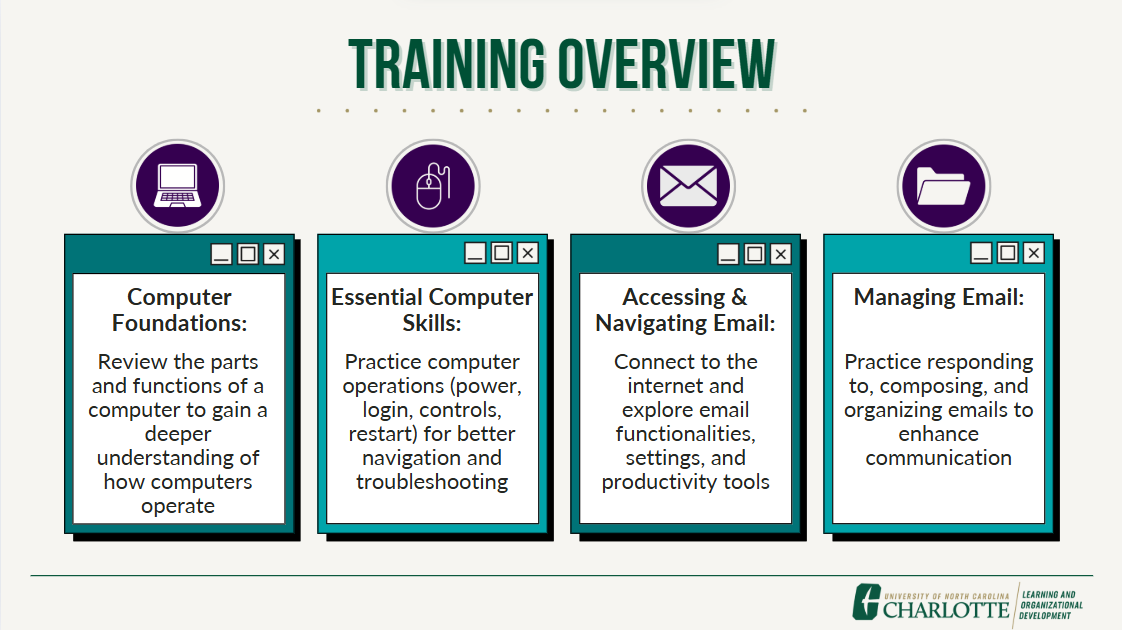Ctrl+Alt+Excel: Mastering Computer Basics at Charlotte
My graduate program’s Capstone project provided the perfect opportunity to address an instructional challenge I’ve personally been passionate about for two years. In my role as an L&D specialist, I’m responsible for onboarding new staff, and as a New Employee Orientation (NEO) facilitator, I have the distinct opportunity to welcome and interact closely with new hires. I’ve consistently witnessed a number of new hires struggling to navigate computers and University systems. Leveraging the ADDIE framework for thorough analysis and development, I designed and piloted a 75-minute in-person training using Canva and Google Docs. This training is a direct response to that need, empowering employees with the fundamental computer skills required for their roles.
Analysis: For a comprehensive analysis, data collection methods included six semi-structured interviews, informal conversations, observations of employee performance during NEO, and a review of existing resources and trainings. With consent, the semi-structured interviews were recorded and transcribed. Inductive coding and thematic analysis were then employed to identify key themes, relationships, and underlying causes. Finally, based on the data’s results, five instructional goals were developed for the training.
Design: Knowle's’ 5 Assumptions of Adult Learners (Andragogy) and Keller’s ARCS Model of Motivation were instructional frameworks used in tandem to build learner confidence, motivations, and independence. A topic analysis, course map, hierarchical sequencing, visual design guidelines, and a design plan were carefully outlined to ensure alignment with instructional objectives. Special attention was given to the client’s requirements and institutional branding standards.
Development: The training presentation was developed using Canva Pro. Supplemental materials include the Facilitator’s Guide, the Participant Guide, and the Training Feedback Form. The Facilitator’s Guide and the Training Feedback Form were primarily developed in Google Docs.
Implementation: While the training offers an instructional solution for employees hoping to strengthen their computer literacy, its impact would be significantly enhanced when paired with supplemental interventions, such as partnering, networking, and alliance building with leadership within the targets departments. Using Rogers’ Implementation Model, I provide the client with a detailed implementation plan to ensure that the training is both successful and impactful.
Evaluation: The training was delivered to a pilot group of twelve learners within the target audience. Kirkpatrick’s Evaluation Model was employed to assess learner satisfaction and the achievement of instructional goals. Feedback and data were analyzed and then used to recommend revisions to the client.
Tools Used: Canva and Google Docs





